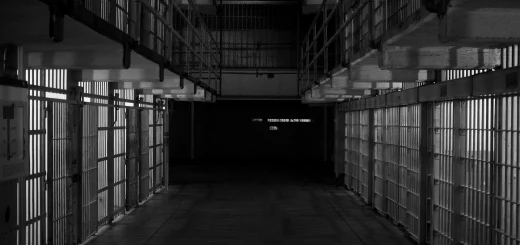Setting the Scene: R v Le and the Importance of Context in s. 9 Analysis

Introduction
Author’s Note: A previous article for TheCourt.ca analyzes the decision of the Ontario Court of Appeal, here.
How we, as individuals, interpret our interactions with the police is highly subjective. How we understand police interactions is informed by factors such as our age, race, social and economic class, gender, and previous experiences or the experiences of those close to us. Where there is an issue of arbitrary detention under s. 9 of the Canadian Charter of Rights and Freedoms (“Charter”), these subjective experiences are interpreted by a court and applied to the framework set out in R v Grant 2009 SCC 32 for determining whether or not there was a detention. At issue in the recent Supreme Court of Canada’s (“the Court”) decision R v Le 2019 SCC 34, is how understanding these interactions with police are informed by context and change the objective assessment of arbitrary detention under s. 9 of the Charter.
Mr. Le was charged with being in possession of a firearm and of drugs. He was arrested after police entered a backyard where he and four other men were standing around. The police asked questions which led to Mr. Le fleeing the scene. Police then apprehended Mr. Le while he was carrying a loaded firearm, drugs, and cash. The majority and dissenting opinions have radically different understandings of the facts which lead to competing conclusions about the nature of the arbitrary detention and whether the evidence ought to be excluded. Ultimately, a narrow 3-2 majority held that Mr. Le’s s.9 Charter rights were infringed and that the Court should exclude the evidence under s. 24 of the Charter. The majority decision also did not address the s. 8 concerns and found that the s. 9 analysis was dispositive of the issue.
This narrow majority shows just how in flux the jurisprudence of s. 9 remains. It raises concerns about how facts related to the “atmosphere” of the events taking place can create divergent results, which makes it difficult for judges, let alone police and ordinary citizens, to know just where the boundaries of our s. 9 Charter rights lie.
The Facts
Both the majority and dissenting judgements agree that Mr. Le was detained by the police. The key issue for both the s. 9 analysis—whether the detention was arbitrary or not—and the s. 24 analysis—whether the evidence should be excluded—turn on when the detention “crystallized” (R v Le, para 30). This determination requires a close look at the underlying facts. Below, I summarize what both judgements generally agree upon, and where the judgements differ on their understanding of the facts.
Mr. Le, at the time of the offence, was a young Asian man described as relatively small in stature. One night, he was with four friends, all of whom were young black men, in the backyard of a building complex in Toronto. On that night, police patrolled the area for an unrelated reason and happened to speak to the security guard for the building complex. He informed the police that there were previous issues at the address where Mr. Le and his friends were gathered. Two police officers approached the backyard, which was surrounded by an approximately 2ft tall fence, and a third officer patrolled the perimeter of the property.
The police entered the backyard and questioned the young men, including Mr. Le, and demanded that he produce some identification. During this interaction, the officers observed him “blading”—angling his body away from the officers—and the officers became suspicious. Mr. Le ran and was arrested by police, who searched him and found firearms, cash, and drugs.
The Majority’s Understanding of When the Detention Crystallized
The majority decision, written by Justice Brown and Justice Martin, highlighted the fact that the men stood in a private backyard and that the police were not investigating anything going on at this location. Immediately upon entering the yard, without “warrant, consent, or warning”, the police questioned the men and did not communicate why they were there (R v Le, paras 39-40). When the police “trespassed” into the yard, the language they used suggested that they intended to take control of the situation. By using “loud stern voices, curt commands and clear orders” (R v Le, para 45), a reasonable person may have been led to believe they were being given orders to obey and that the police “were exerting dominion over the individuals in the backyard from the time of entry” (R v Le, para 47). Overall, the conduct of the police was described as being “aggressive” (R v Le, para 68).
The majority also used social science evidence to aid their understanding of the situation. Using studies on racial profiling and ‘carding’, they assessed the subjective circumstances of Mr. Le to view how a reasonable person “of a similar racial background would perceive the interaction with the police” (R v Le, para 75). In doing so, the Court accepted that racialized people, like Mr. Le and his friends, may experience interactions with the police differently than white people might, given the historic—and continuing—over-policing of racialized communities. The majority also challenged the assumption that more frequent interactions with the police would make it less likely that a person felt detained. In fact, the opposite may be true. Racialized people are subjected to more frequent and unpleasant interactions with the police, leading to heightened suspicion and a reasonable apprehension that one is being detained.
Overall, due to the fact that the police trespassed onto private property and to studies on racial profiling and carding, the majority determined that the detention crystallized when the police entered the back yard.
The Dissent’s Understanding of When the Detention Crystallized
The dissenting opinion, written by Justice Moldaver, took issue with the presentation of the facts from the majority, especially where the majority made different findings from the trial judge. Justice Moldaver began by highlighting that the trial judge found that the police greeted everyone in the yard and that the young men did not object to the police entering the yard (R v Le, para 175). He continued to argue that these factual findings of the trial judge were only reviewable on the standard of palpable and overriding error and that it was wrong for the majority to substitute their own understanding or appreciation of the facts rather than defer to the trial judge’s in this case (R v Le, para 248).
The determination of when the detention crystallized, however, is reviewable on a standard of correctness. Here, Justice Moldaver found that the initial interactions between the police and the individuals were “cordial” and that at this initial stage the police officers were “orienting themselves to the situation and engaging in the type of pre-detention exploratory interaction” which was characterized in previous cases dealing with s. 9 (R v Le, para 275). Therefore, according to Justice Moldaver, it was not until the police started asking Mr. Le specific questions about the contents of his bag that Mr. Le was detained.
For Justice Moldaver, the arbitrary detention was brief and immediately followed a lawful, investigative detention based on a “reasonable suspicion” that Mr. Le carried a weapon (R v Le, para 295). Although there was a short arbitrary detention, what followed was a lawful detention and subsequent arrest.
Should the Evidence Be Excluded?
Both the majority and the dissenting opinions found that Mr. Le’s s. 9 Charter rights were breached by the conduct of the police officers. But Justice Moldaver’s dissent highlights that the different understandings of the facts led to competing opinions on whether the evidence should be excluded under s. 24(2) of the Charter as a remedy.
The majority held to exclude the evidence as a remedy for the breach. The arbitrary detention of Mr. Le was a serious breach of his Charter rights to liberty and protection from unjustified state interference (R v Le, para 157). Furthermore, there was no finding that the police acted in good faith, and there were serious concerns about the police conduct, especially with regards to racialized persons. Even though the evidence obtained as a result of the breach—the gun and drugs found on Mr. Le—was essential to the Crown’s case, it is in society’s interest to “[require] the police to comply with the Charter in all neighbourhoods and to respect the rights to all people” (R v Le, para 165).
For Justice Moldaver, the Charter breach in this case was not serious. The brief arbitrary detention that occurred was short and followed by a lawful investigative detention when police formed a reasonable suspicion that Mr. Le may have carried a weapon. The impacts on Mr. Le’s Charter interests were therefore not nearly as great as the majority holds. Furthermore, the police, although mistaken in entering the yard, had “[inadvertently]” did so and had been conducting a lawful investigation. (R v Le, para 288). Because the breach of Charter rights was relatively minor and inadvertent and because there is a public interest in adjudicating cases dealing with firearms-related offences on their merits, the evidence ought not to be excluded under s. 24(2) of the Charter (R v Le, para 301).
Analysis
In many cases dealing with s. 9 of the Charter, the determination is contextual and highly dependent on the specific facts. But, as is the case in R v Le, just how one understands the facts itself is open to interpretation. For the majority, the facts paint a picture of aggressive police conduct intruding into the space of racialized people, who are more likely to have negative interactions with the police.
On the other hand, the dissent views the scenario as police acting respectfully and mistakenly entering the yard. The majority and the dissent have a similar understanding of what happened that night, but interpret the events differently based on subjective factors that the witnesses described in their evidence. For example, whether the police officers’ tone was aggressive or respectful was highly contentious, and something that ultimately comes from the subjective understandings that the witnesses in a criminal trial will provide. Citizens may have different understandings of things like tone and body language than the police officers, and this is further complicated by factors such as the race or stature of the individual, as was the case here with Mr. Le.
These subjective interpretations of events given by witnesses form very important narratives that help judges and finders of fact understand the situation presented to them. Here, the issues are dispositive based almost exclusively on the different narratives emerging from essentially the same facts, with the added assistance of social science evidence that the majority used to further contextualize the evidence and narrative that was presented to them. These narratives in the case of s. 9 issues are incredibly important—the analysis from Grant relies on an objective appreciation of what a reasonable person might feel in the circumstances. Additionally, if the circumstances are described as aggressive, a reasonable person would be far more likely to feel that the police were detaining them, as opposed to an interaction that was respectful.
Where those narratives are dispositive to the legal issues in the case, as was the case here, those narratives and their factual underpinnings should be subjected to appellate scrutiny at a lower level than other factual determinations by the trial judge.
Conclusion
This case highlights how small differences in the ways that judges appreciate the facts of a case cause radically different consequences for the parties involved. The majority took a different approach to the issues than the trial judge and the majority at the Court of Appeal. The majority used social science evidence to bolster their holding that this interaction between the police and Mr. Le was one where detention was arbitrary the moment the police trespassed into the yard. Justice Moldaver, in dissent, took the approach that the findings of fact of the trial judge should not be disturbed, and that the Charter breach was short and not serious.
What is missed from this discussion is any lesson about how police or citizens might want to understand the content of their s. 9 rights. When the analysis is so precise and dependant on the facts, the jurisprudence can lead to confusing results that make it difficult for police to determine how to govern their interactions with individuals. Given the very narrow 3-2 majority here, this is likely not the end of the road for s. 9 jurisprudence.








Join the conversation